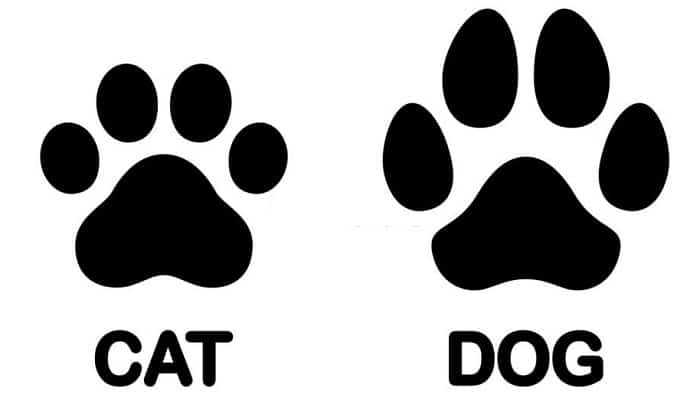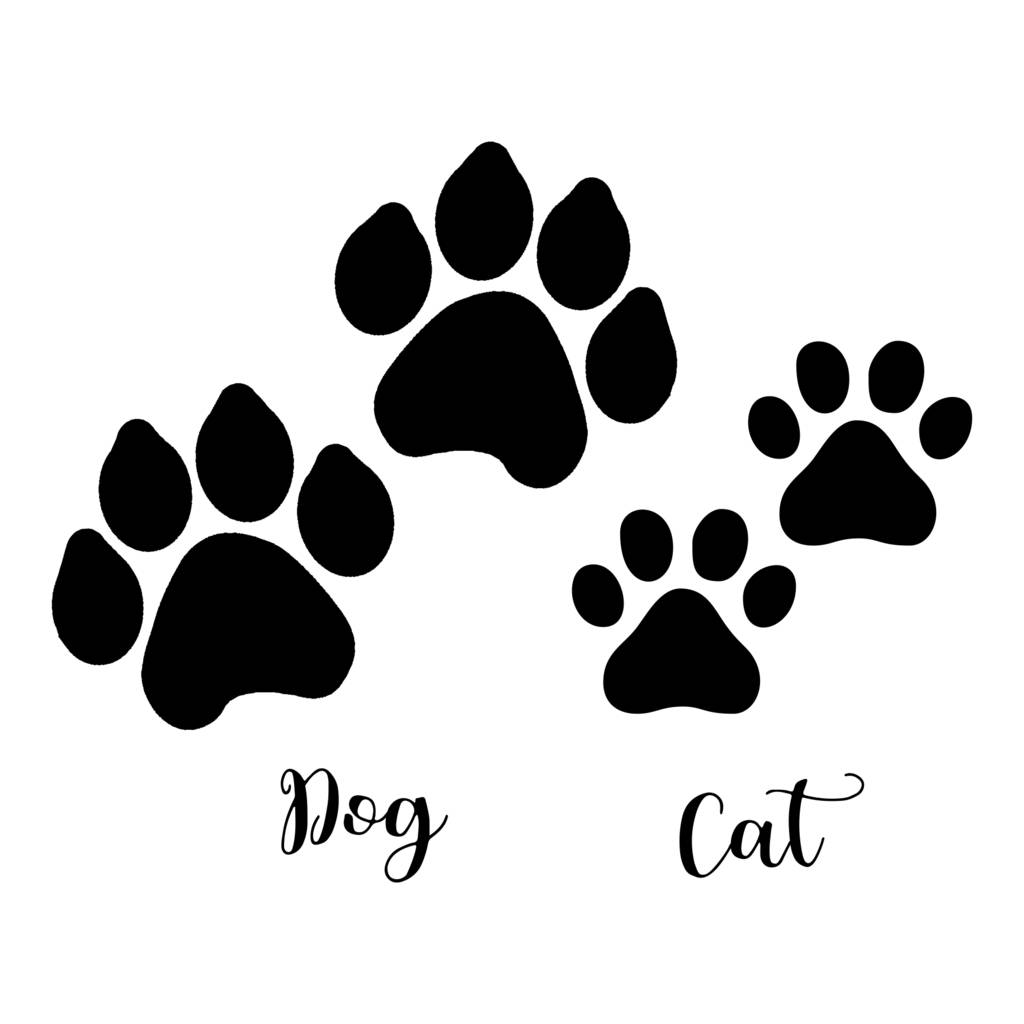In the realm of animal anatomy, the paw prints of cats and dogs stand as intriguing and distinctive identifiers. While both these beloved companions share the commonality of being quadrupedal, their paw prints reveal a captivating tale of adaptation and evolution. Join us on an in-depth exploration of the fascinating differences between cat paws and dog paws, uncovering the secrets hidden within their intricate imprints.
A Tale of Two Paws: Unveiling the Key Differences

In the realm of animal anatomy, the paw prints of cats and dogs stand as intriguing and distinctive identifiers. While both these beloved companions share the commonality of being quadrupedal, their paw prints reveal a captivating tale of adaptation and evolution. Join us on an in-depth exploration of the fascinating differences between cat paws and dog paws, uncovering the secrets hidden within their intricate imprints.

Toe Pads:
- Cat Paw: The toe pads on cats are relatively small and firm, providing them with excellent traction for climbing and jumping.
- Heart With Paw Print Heart With Paw Print: A Symbol Of Love, Compassion, And Unconditional Bonding
- Free Cat Paw SVG Free Cat Paw SVG: The Ultimate Guide To Downloading And Using Cat Paw SVG Files
- Dog Paw Print Heart Dog Paw Print Heart: A Symbol Of Unconditional Love And Loyalty
- Cat Paw Black And White SVG Cat Paw Black And White SVG: A Comprehensive Guide
- Dog Paw Print With Heart The Enduring Symbolism Of The Dog Paw Print With Heart: A Timeless Expression Of Love And Loyalty
-
Shape and Size:
- Dog Paw: Dogs have larger and softer toe pads, which act as shock absorbers and provide insulation while running.

-
Claws:
- Cat Paw: Cats possess retractable claws, which they extend when hunting or defending themselves. These sharp claws leave distinct marks in their paw prints.
- Dog Paw: Dogs have non-retractable claws, which are blunt and designed for digging and gripping. They are usually not visible in paw prints.

-
Paw Size and Stride:
- Cat Paw: Cats have smaller paws and a shorter stride compared to dogs. Their paw prints are more closely spaced, reflecting their agility and ability to maneuver in tight spaces.
- Dog Paw: Dogs have larger paws and a longer stride, allowing them to cover more ground with each step. Their paw prints are typically farther apart, indicating their more open and energetic gait.
- Shape and Size: Look for the overall shape and size of the print. Oval-shaped with four toes indicates a cat, while rounded with five toes suggests a dog.
- Toe Pads: Pay attention to the size and shape of the toe pads. Small, firm toe pads are characteristic of cats, while larger, softer toe pads are typical of dogs.
- Claws: Check for the presence of claw marks in the print. Visible claw marks indicate a cat, while their absence suggests a dog.
- Paw Size and Stride: Consider the size of the paw print and the distance between them. Smaller, closely spaced prints are more likely to be from a cat, while larger, farther apart prints are more likely to be from a dog.
A Tale of Two Paws: Unveiling the Key Differences
Adaptations and Evolutionary Significance
The distinctive features of cat and dog paws are a testament to their unique evolutionary adaptations. Cats, with their compact paws and retractable claws, are perfectly equipped for stalking and climbing. Their small toe pads provide excellent traction, enabling them to navigate trees and other vertical surfaces with ease.
Dogs, on the other hand, have evolved larger paws and non-retractable claws that are ideal for running and digging. Their larger toe pads provide cushioning and insulation, allowing them to traverse a wide range of terrains comfortably.
Decoding the Paw Print: A Guide to Identification
Identifying cat and dog paw prints can be a valuable skill for animal enthusiasts, wildlife trackers, and forensic investigators. Here are some tips for distinguishing between the two:
FAQs: Unraveling the Mysteries of Cat and Dog Paws
Q: Why do cats have retractable claws?
A: Retractable claws allow cats to stalk prey silently and climb trees without damaging their claws.
Q: What is the purpose of the dewclaw on a dog’s paw?
A: The dewclaw provides additional stability and traction, particularly on slippery surfaces.
Q: Can cats and dogs interbreed?
A: No, cats and dogs are different species and cannot produce viable offspring.
Q: Why do some cats have polydactyly (extra toes)?
A: Polydactyly is a genetic mutation that results in cats having extra toes. It is a relatively common trait in some breeds.
Conclusion
The paw prints of cats and dogs are captivating and complex indicators of their unique evolutionary adaptations. Whether it’s the sleek agility of a cat or the energetic gait of a dog, these intricate imprints tell a fascinating story of their anatomical differences and the remarkable diversity of the animal kingdom. By understanding the distinctive features of cat and dog paws, we gain a deeper appreciation for the extraordinary adaptations that have shaped these beloved companions.











